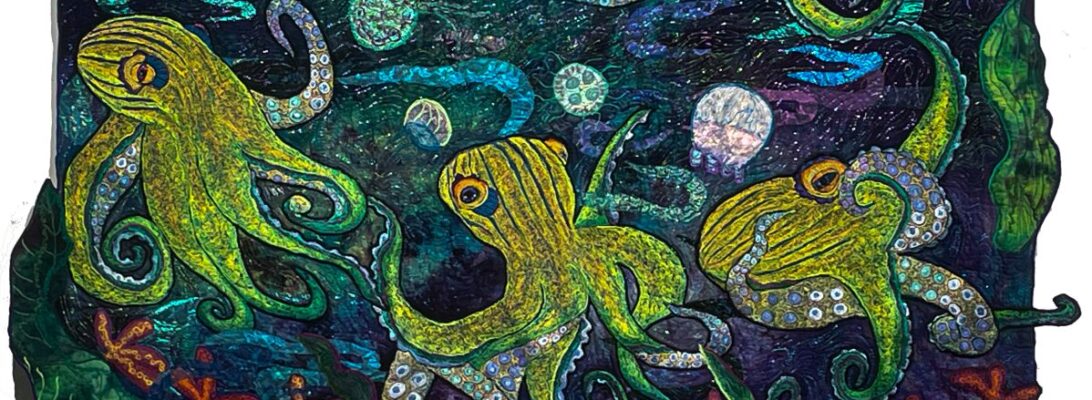
I’m worn out after doing a bunch of big pieces. Big is of course, relative. I consider anything past 33″ x 43″ largish. I like workin that size. But the last ones have stretched larger, and I’m tired of shoving large wads of fabric through the machine.
I’ve been working on a white garden piece. The idea came fromThe White Garden, a speculative fiction about Virginia Wolf. She was thinking about an all white garden for the blackout, so that the moon would show on the white petals. I found some embossing plates that were wonderful prarie grasses. I put them on dark blue hand dye in shades of white and blue.
I’ve never had the dicipline to plant only white flowers. Too much of a color junkie. But I love the idea.
This is a visual path piece. It’s about 12″ x 45″ So everything has to be tiny.

So I made a strip of white and pale flowers. But then it needed moonlight and bugs. No one said the bugs had to be white.

How is tiny embroidery different than large pieces. Several things work differently. First off, I want to avoid a thick outline. So instead of embroidering on a sandwich of hand-dye, felt, stitch and tear, and totally stable, I left out the hand dye, and embroidered on the felt instead. Since I wqs using black outlines, I used black felt. Using felt reduces the bulk, but I found it could not be ripped out or sewn over. This is partially why I made a lot more bugs than I would need.
I could have embroidered tiny pieces within the piece. But I chose not to this time. It still makes for a lot of distortion. So I did a batch of moths, fireflies, snails and rocks.
Embroidering tiny pieces insists upon simplification. The usual shocker-shader colors are too much. A simple range works better: gold and green, white and blue, green and blue.






The fireflies are also mostly unshaded. There’s no room for anything except the primary colors of red and green.

So my white garden is full of wild color, very tiny bugs. I think I could find my way in it.

















































































